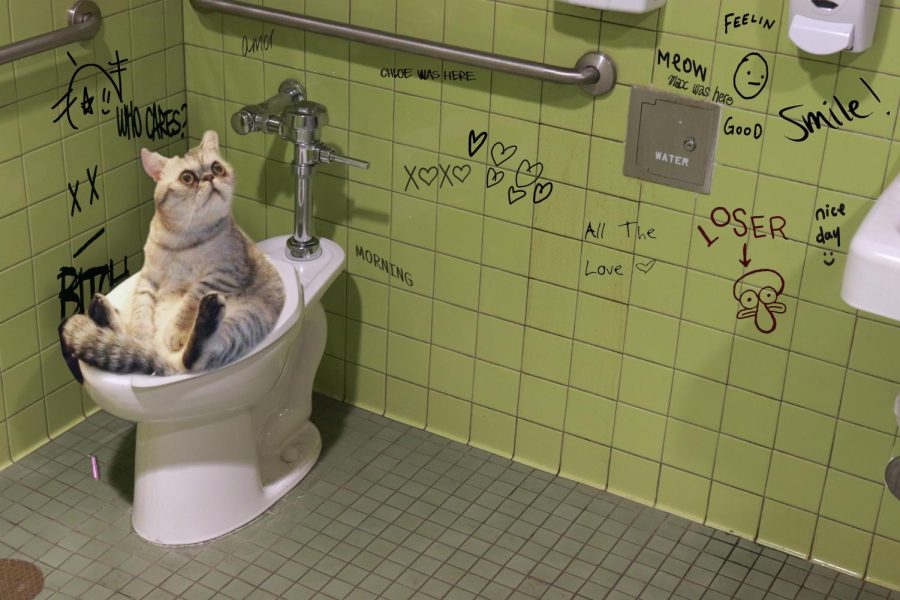Never Flush Cat Poop Down Your Toilet - Protect Your Pipes Infrastructure
Never Flush Cat Poop Down Your Toilet - Protect Your Pipes Infrastructure
Blog Article
Everyone will have their unique idea involving How to Dispose of Cat Poop and Litter Without Plastic Bags.

Introduction
As pet cat owners, it's essential to bear in mind how we deal with our feline good friends' waste. While it may appear practical to flush cat poop down the bathroom, this method can have damaging repercussions for both the environment and human wellness.
Ecological Impact
Purging feline poop presents unsafe microorganisms and parasites right into the supply of water, posturing a substantial danger to marine communities. These impurities can negatively affect aquatic life and compromise water high quality.
Health Risks
In addition to environmental worries, purging cat waste can likewise present wellness risks to people. Pet cat feces might contain Toxoplasma gondii, a bloodsucker that can cause toxoplasmosis-- a potentially serious ailment, particularly for expecting females and individuals with damaged body immune systems.
Alternatives to Flushing
Thankfully, there are much safer and extra liable means to dispose of pet cat poop. Think about the adhering to choices:
1. Scoop and Dispose in Trash
The most typical method of throwing away cat poop is to scoop it into an eco-friendly bag and throw it in the trash. Make certain to use a specialized litter inside story and take care of the waste without delay.
2. Usage Biodegradable Litter
Go with eco-friendly pet cat litter made from materials such as corn or wheat. These trashes are environmentally friendly and can be safely taken care of in the garbage.
3. Bury in the Yard
If you have a lawn, think about burying feline waste in an assigned location far from vegetable yards and water resources. Be sure to dig deep enough to prevent contamination of groundwater.
4. Set Up a Pet Waste Disposal System
Purchase an animal waste disposal system particularly made for pet cat waste. These systems make use of enzymes to break down the waste, lowering smell and environmental effect.
Verdict
Liable family pet possession prolongs beyond offering food and shelter-- it additionally entails correct waste management. By refraining from purging feline poop down the commode and going with different disposal techniques, we can minimize our ecological footprint and safeguard human health and wellness.
Why Can’t I Flush Cat Poop?
It Spreads a Parasite
Cats are frequently infected with a parasite called toxoplasma gondii. The parasite causes an infection called toxoplasmosis. It is usually harmless to cats. The parasite only uses cat poop as a host for its eggs. Otherwise, the cat’s immune system usually keeps the infection at low enough levels to maintain its own health. But it does not stop the develop of eggs. These eggs are tiny and surprisingly tough. They may survive for a year before they begin to grow. But that’s the problem.
Our wastewater system is not designed to deal with toxoplasmosis eggs. Instead, most eggs will flush from your toilet into sewers and wastewater management plants. After the sewage is treated for many other harmful things in it, it is typically released into local rivers, lakes, or oceans. Here, the toxoplasmosis eggs can find new hosts, including starfish, crabs, otters, and many other wildlife. For many, this is a significant risk to their health. Toxoplasmosis can also end up infecting water sources that are important for agriculture, which means our deer, pigs, and sheep can get infected too.
Is There Risk to Humans?
There can be a risk to human life from flushing cat poop down the toilet. If you do so, the parasites from your cat’s poop can end up in shellfish, game animals, or livestock. If this meat is then served raw or undercooked, the people who eat it can get sick.
In fact, according to the CDC, 40 million people in the United States are infected with toxoplasma gondii. They get it from exposure to infected seafood, or from some kind of cat poop contamination, like drinking from a stream that is contaminated or touching anything that has come into contact with cat poop. That includes just cleaning a cat litter box.
Most people who get infected with these parasites will not develop any symptoms. However, for pregnant women or for those with compromised immune systems, the parasite can cause severe health problems.
How to Handle Cat Poop
The best way to handle cat poop is actually to clean the box more often. The eggs that the parasite sheds will not become active until one to five days after the cat poops. That means that if you clean daily, you’re much less likely to come into direct contact with infectious eggs.
That said, always dispose of cat poop in the garbage and not down the toilet. Wash your hands before and after you clean the litter box, and bring the bag of poop right outside to your garbage bins.
https://trenchlesssolutionsusa.com/why-cant-i-flush-cat-poop/

We are very fascinated by How to Dispose of Cat Poop and Litter Without Plastic Bags and I really hope you appreciated the entire blog posting. Are you aware of another person who is fascinated by Don’t flush cat feces down the toilet? Be sure promote it. Thanks a lot for your time. Don't forget to visit our blog back soon.
Visit Url Report this page